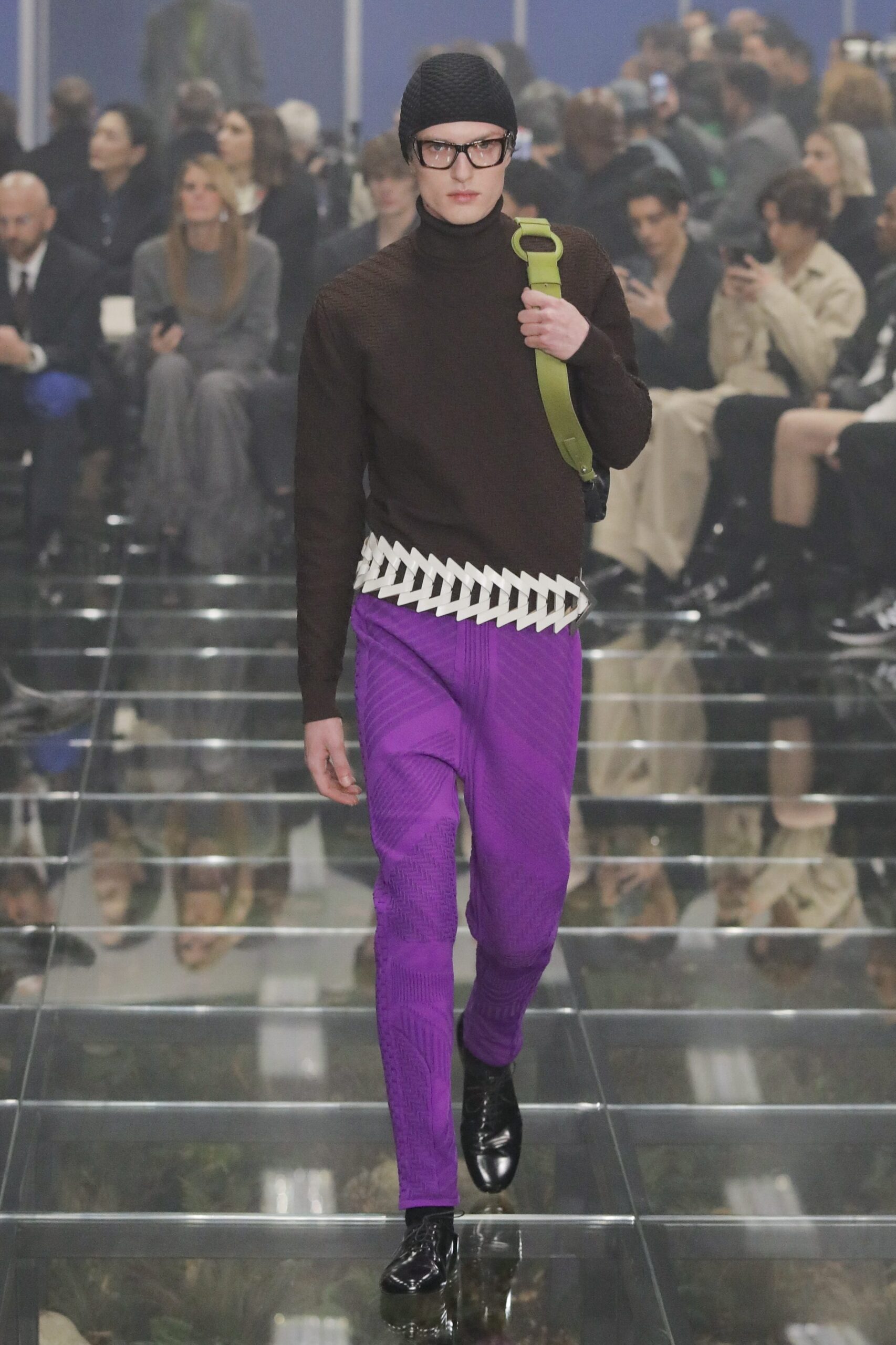Daily life can sometimes unfold in an open space dominated by office chairs and may be characterized by the monotony and anxiety about the future that, in recent years, have dominated fashion reflections with a tendency more toward repetition than change. For the Fall/Winter 2024-25 Men’s season, Prada takes viewers on an exciting journey that challenges fashion conventions, aptly named Human Nature. OMA/AMO, the mastermind behind the runway’s set design, plays with the juxtaposition of office interiors and a natural landscape. This surprising dichotomy becomes fertile ground for the fundamental truths of humanity to sprout, exploring our natural instincts and emotional needs that define us. The transparent floor, which becomes a crystal roof for the underlying nature, paradoxically obstructs the birth of something new. Perhaps a metaphor, powerfully subversive, about continuous innovation and seasonal reformulation. At the center of the entire Prada Men’s runway is indeed a simple but profoundly human statement: the essential need to connect with the surrounding world. The collection dances to the rhythm of the seasons, highlighting the natural order of things and the gestures that shape the garments. Here, clothing becomes a response to the context it’s in, reflecting and reacting to the diverse environments of interiors and exteriors. The collection addresses the innate emotional instinct to remain anchored to something known, to the cycles of nature, embracing a world guided by climatic seasons, an authentic experience that deviates from artificial reality.

The garments become vehicles reflecting the atmosphere and nuances of the seasons, accompanying us wherever we go. Through Prada’s proposal, there emerges a sense of open space, the timeliness of nature, and a direct expression of the desire to explore the surrounding world. A business-style tie in the first look foreshadows the direction of designers Miuccia Prada and Raf Simons, reaffirming a continuous process of rediscovery and reinterpretation of the codes of Italian bourgeoisie. A lively canary yellow shirt, adorned with a white collar and cuffs, accompanies straight-legged black trousers, complemented by a rusty-toned tie and an elegant pair of lacquered lace-up shoes. This is the essential attire for those engaged in office work. However, a subtle reinterpretation of Prada elements emerges, with surprising details such as a side-buckle belt and a red headband. As the man dresses, the elements materialize and overlap: the jacket or bomber, the coat or trench, the backpack or maxi bag. Practical fashion that, nevertheless, does not forsake the uniqueness of each individual piece, standing out in the sea of businessmen. Deconstructed briefcases complement the runway looks, including playful details such as belt-style edges and a buckle that moves with the wearer. Out-of-office attire continues to propose itself with the addition of nylon backpacks, carried over one shoulder. Utilitarian-style waist bags-a Maison classic-were worn on looks with lilac shirts and ties, again blending outdoor practicality with more formal looks. Beanies, presented in a number of looks, are cozy accessories that provide a touch of contrast between office attire. Double-breasted jackets were finished with a three-button construction and were offered in gray and sand-colored fabrics, worn with open peach sandals.

“The idea of renewal and change – like nature, natural rhythms, inspired the clothes in this collection. Things have changed a lot in their weight and the language of their forms, adapting to different spaces and alternative environments.”
The imposing brutalism of the office design appeared to contrast with the freedom of nature, with the two worlds joined by a glass walkway that showed the fertile land below as guests sat above a moving river on swiveling office chairs. Clear but not redundant on the silhouettes, the reflection on the idea of renewal and change, influenced and reshaped by this perspective, are transformed in terms of weight and form, finding space in different environments. Therefore, the Human Nature collection seems to reflect more the adaptive power of fashion rather than pure renewal. The AMO studio created a set design that provides a meaningful backdrop for the collection entitled Human Nature. In the setting, and as reflected in the collection itself, fashion is seen as a regenerative power, analogous to the earth opening up to bring forth plants in early spring. The transparent glass floor possesses a spring that flows below the audience. Here we find in the same space the world of everyday life, nature, and fashion, symbolically fizzled by this overhanging representation of the world.















